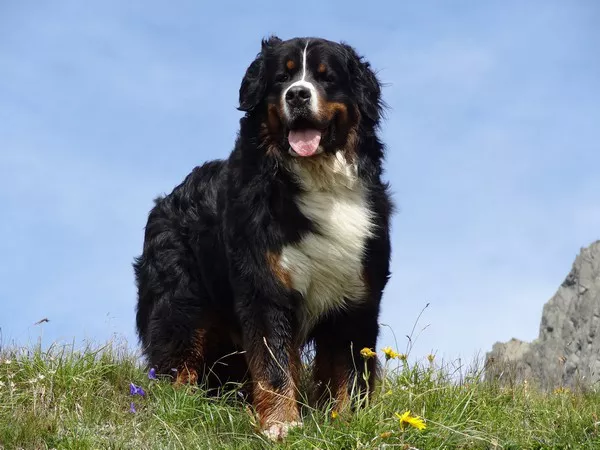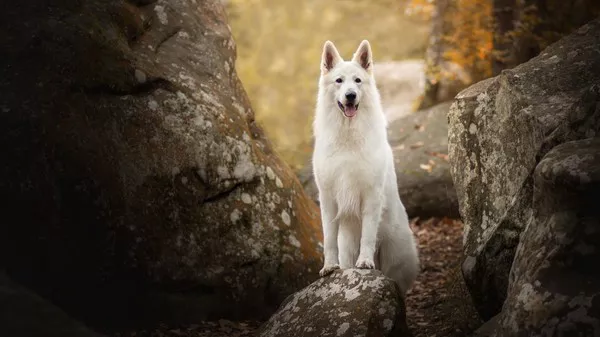Norwegian Forest Cats, or “Wegies” as they are affectionately known, are a breed steeped in history and lore. Originating from the rugged landscapes of Norway, these cats are known for their impressive size, dense fur, and friendly demeanor. Yet, a common question among potential cat owners and feline enthusiasts alike is whether Norwegian Forest Cats are particularly noisy. In this article, we will explore the various aspects of the Norwegian Forest Cat‘s behavior, including their vocalizations, and assess whether they can be considered noisy compared to other breeds.
Understanding Norwegian Forest Cats
Origin and History
The Norwegian Forest Cat is a natural breed that has evolved in the wild, adapting to harsh Scandinavian climates. These cats are believed to have descended from domestic cats brought to Norway by the Vikings, and over centuries, they have developed a robust physique and a thick double coat suited for survival in cold environments. Their history is rich with folklore, including tales of them being the mystical companions of Norse goddesses.
Physical Characteristics
Norwegian Forest Cats are notable for their large size, with males often weighing between 12 to 16 pounds and females slightly smaller. Their dense, water-repellent coat is designed to protect them from harsh weather, and they possess tufted ears and bushy tails that contribute to their distinctive appearance. Their eyes are typically almond-shaped and can range in color from gold to green.
Personality Traits
These cats are known for their friendly, sociable nature. They are often described as gentle giants, combining a playful attitude with a calm demeanor. Norwegian Forest Cats are generally good with children and other pets, making them excellent family companions. They are also known for their intelligence and independence, traits that have made them adaptable to various living environments.
Vocalizations in Cats
The Role of Vocalizations
Vocalizations are an essential aspect of feline communication. Cats use a range of sounds, including meowing, purring, hissing, and growling, to convey different messages. The frequency and type of vocalization can vary significantly between breeds and individual cats. Understanding these vocalizations is key to interpreting a cat’s needs and emotions.
Factors Influencing Vocalization
Several factors can influence a cat’s vocalizations, including:
Breed: Different breeds have varying tendencies toward vocalization. Some breeds, like the Siamese, are known for being particularly vocal, while others may be more reserved.
Age: Kittens and young cats are generally more vocal as they seek attention and communicate their needs. Older cats may become quieter, although this can vary.
Health: Changes in vocalization can sometimes indicate health issues. If a cat suddenly becomes more vocal or exhibits unusual sounds, it is essential to consult a veterinarian.
Environment: Cats may vocalize more if they are stressed or if their environment changes. For example, moving to a new home or the introduction of a new pet can affect a cat’s vocal behavior.
Norwegian Forest Cats and Their Vocalizations
General Vocal Behavior
In general, Norwegian Forest Cats are not known for being excessively noisy. They are more likely to use their voices in a soft, pleasant manner compared to some other breeds. However, like all cats, their vocal behavior can vary based on individual personality and circumstances.
Common Vocalizations of Norwegian Forest Cats
Meowing: Norwegian Forest Cats typically use meowing to communicate with their human companions. Their meows are usually gentle and not as loud or persistent as those of some other breeds. They might meow to greet you, ask for attention, or indicate they are hungry.
Purring: Purring is a common vocalization among Norwegian Forest Cats and is generally associated with contentment. These cats often purr when they are being petted or when they are relaxed.
Chirping and Trilling: Some Norwegian Forest Cats may use chirps or trills to express excitement or to get attention. These sounds are typically softer and less intrusive than constant meowing.
Hissing and Growling: Like all cats, Norwegian Forest Cats will hiss or growl if they feel threatened or are unhappy. These sounds are usually reserved for situations where the cat feels cornered or distressed.
Comparisons with Other Breeds
When comparing Norwegian Forest Cats to other breeds known for their vocal tendencies, such as the Siamese or the Maine Coon, it becomes evident that Wegies are generally quieter. Siamese cats, for example, are known for their loud, distinctive meows and constant vocal interactions with their owners. Maine Coons, while also large and friendly, can be somewhat more vocal compared to Norwegian Forest Cats.
Factors Affecting Vocalization in Norwegian Forest Cats
Socialization: Norwegian Forest Cats that are well-socialized from a young age tend to be more balanced in their vocal behavior. Proper socialization helps them feel comfortable in various situations, reducing the likelihood of excessive vocalizations due to stress or fear.
See Also: Do Norwegian Forest Cats Like Baths?
Environment: The environment in which a Norwegian Forest Cat is raised can influence its vocal behavior. A stable, enriching environment can lead to a more content cat, which may result in less vocalization.
Individual Personality: As with any breed, individual Norwegian Forest Cats have their unique personalities. While most are relatively quiet, some may have more pronounced vocal tendencies. Observing your cat’s behavior and understanding its communication style is crucial.
Managing Vocalization in Norwegian Forest Cats
Encouraging Positive Communication
To ensure that your Norwegian Forest Cat remains a well-balanced and content companion, consider the following tips:
Provide Enrichment: Engage your cat in interactive play and provide various toys to stimulate its mind and body. Enrichment helps reduce boredom, which can sometimes lead to increased vocalization.
Establish Routine: Maintaining a consistent daily routine can help your cat feel secure and reduce stress-related vocalizations. Regular feeding times, play sessions, and a predictable environment contribute to a more relaxed cat.
Address Health Issues: If your Norwegian Forest Cat’s vocal behavior changes suddenly, consult a veterinarian to rule out any underlying health problems. Changes in vocalization can sometimes indicate discomfort or illness.
Positive Reinforcement: Encourage positive behaviors by rewarding your cat with treats and affection when it communicates calmly. Avoid reinforcing excessive vocalizations by not responding to demands made through meowing.
Dealing with Excessive Vocalization
If your Norwegian Forest Cat does become excessively vocal, it’s essential to assess the potential causes:
Medical Evaluation: Ensure that there are no medical issues contributing to the increased vocalization. Health problems like dental issues, thyroid disorders, or cognitive decline can affect vocal behavior.
Behavioral Assessment: Consider whether there are environmental or behavioral factors that may be contributing to the excess vocalization. Changes in the household, such as moving or new pets, can influence a cat’s behavior.
Professional Guidance: If you are unable to manage your cat’s vocalization on your own, seeking advice from a feline behaviorist or a veterinarian with experience in behavioral issues may be beneficial.
Conclusion
Norwegian Forest Cats are generally not considered to be a noisy breed compared to others. They possess a range of vocalizations, including meowing, purring, and chirping, but these sounds are typically gentle and moderate. The breed’s calm and sociable nature contributes to its relatively quiet demeanor.
Understanding and managing your Norwegian Forest Cat’s vocal behavior involves recognizing individual differences, providing appropriate enrichment, and ensuring a stable environment. By addressing any potential health issues and encouraging positive communication, you can maintain a harmonious relationship with your Norwegian Forest Cat and appreciate its unique vocal expressions.
In summary, while Norwegian Forest Cats may not be the quietest of all feline breeds, they are certainly not known for excessive noisiness. Their vocalizations are usually pleasant and manageable, making them a wonderful choice for those seeking a friendly and relatively quiet feline companion.
Related Topics:























